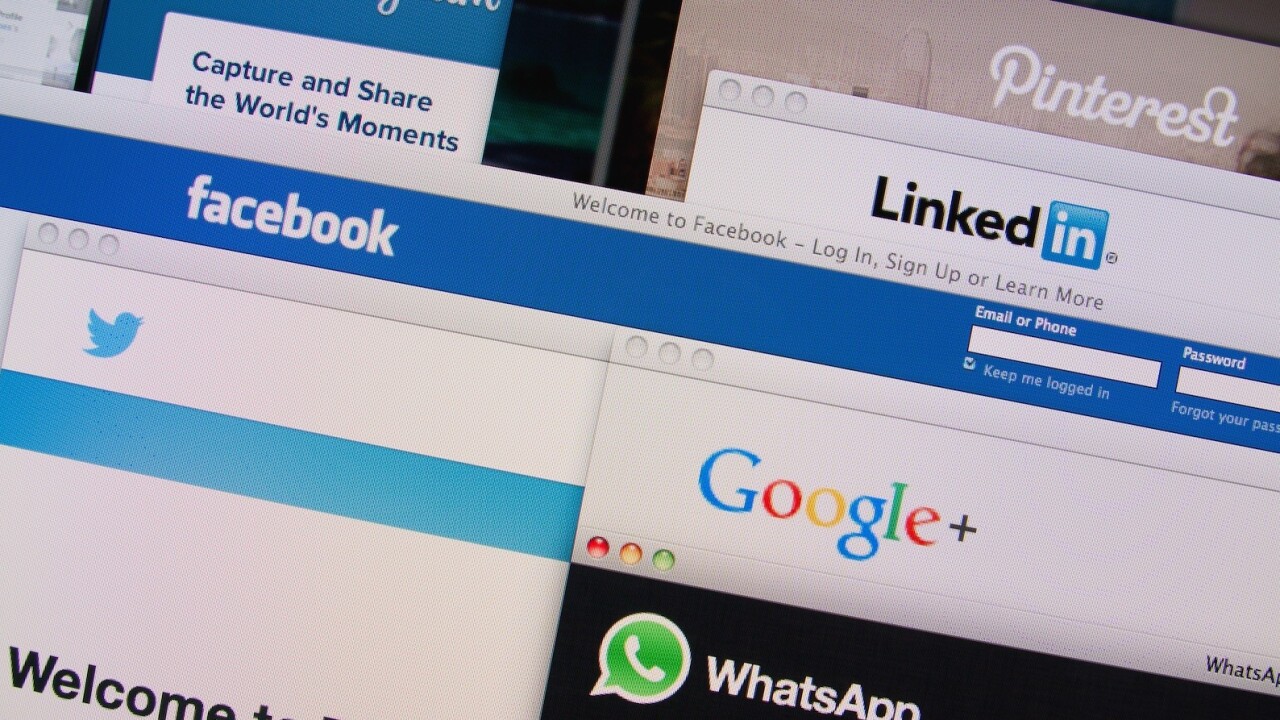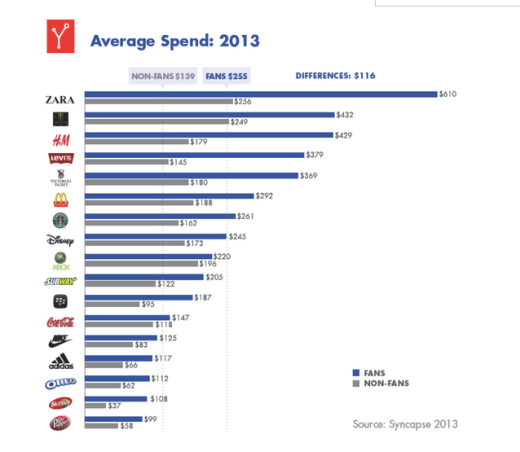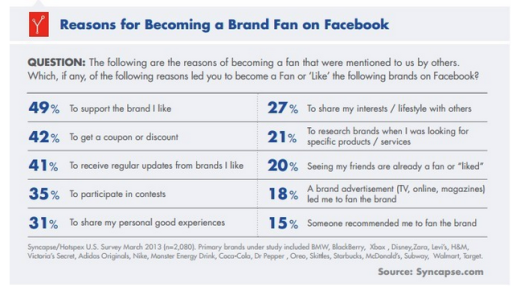
Gone are the days when marketing professionals question the value of their company having a presence on social networks. Regardless of if the company is B2B, B2C, or any combination of the two – their customers are on social because EVERYONE is on social.
You would think, however, that at this point we have a better understanding of what makes a successful brand social strategy. Unfortunately, companies are still getting social media marketing wrong. Very wrong. Here’s what I have witnessed, and how you can turn it around:
1. Retention > Acquisition
This is a very common mistake for brands to make. Instead of looking at social media and networks as a tool for new customer/prospect acquisition, they should be much more focused on retention. Our data has proven that a new Facebook fan is indeed likely to become a new customer, however, if an existing customer becomes a fan, their repeat purchase behavior and lifetime value to your brand doubles. We’re not the only ones to see this behavior.
This report found that fans spend approximately $116 more per year than non-fans in their respective categories. The clothing-fashion category had the biggest difference with fans reporting that they spend approximately $257 more per year than non-fans. Instead of focusing on bringing in new customers, focus on the large number of existing customers you have and make them more valuable.
You will see much higher return in the time, effort and money you spend on social if you focus on fostering stronger existing customer relationships and loyalty.
2. Don’t try to be everywhere
A lot of brands try to be on every single social network that exists. For instance, I met with a social marketer for a professional sports team and their internal goal was to have the most fans of any team, on every social network. First of all, this just isn’t necessary. But brands think that if a network exists – Snapchat, Tumblr, etc. – even if the demographic stats don’t support it, they have to be there.
They believe they must be where every single customer is, rather than focusing on building better relationships and truly understanding where their most powerful customers are networking. It’s important to not only look at the persona of the brand, but also the persona of the customer.
3. Step away from the spray & pray mentality
Another symptom of trying to be everywhere is not understanding, or catering to, specific people. Many brands do not know who their ideal customer is, never mind their ideal fan or follower. While doing so is hard to accomplish, it’s also very important.
One way for businesses to understand who and what segment of fans are most important is to calculate the lifetime value of a customer, and understand how much an individual has spent over time.
If you are able to analyze and categorize customers based on their lifetime value, you can begin to understand that persona, and attempt to match them to a social profile, mapping out other individuals that share the same traits.
This will require a lot of data correlation and analytics, but by focusing on communicating and campaigning with your highest lifetime value customers (versus spray and pray) you will make stronger connections and see stronger results.
4. Don’t treat social as the Frankenstein of your brand
Brands do not build social into their product or service nearly enough. Social should be baked into the customer experience, so that when you go to a checkout, for example – whether it’s in-store, online or in an app – there is a level of social engagement (such as sharing your purchase with friends, or following the brand for future discounts).
Make your business social in nature. Ironically, many smaller mom-and-pop shops are getting this right while too many larger brands are missing the mark. Your local coffee shop has likely offered you a free coffee if you check in a number of times, or some similar offer. Big brands should be doing the same. It’s as simple as requiring customers to log in with Facebook or Twitter, and incentivizing them to interact socially.
5. Social is not television
Many brands forget that the purpose of social is to connect with individuals and have a conversation. Brands still treat it like a TV ad – think: one-way message, occasional question, one-way message, etc. Unfortunately for consumers who receive these messages in their online feed, it is a very one-way street, instead of encouraging two-way conversations.
A good rule of thumb for social is to talk about items not related to your brand 80 percent of the time – feel free to focus on you the other 20 percent. We are still in a stage where it is frequently the opposite – it does not feel natural and consumers instinctively tune out.
6. Think like a customer
In addition to being a successful marketer, you are also a consumer of various brands. Wear that hat when you are interacting with fans and followers. You and I, and every customer on this planet, possess a “what’s in it for me” mindset. Keep this in mind and make your customers feel special – don’t just engage for the sake of engaging.
Offer exclusive access to news, content, discounts, and anything else that make your customers feel like VIP. Typically, brands will build out their follower count by offering exclusive content and discounts, and once they reach a certain amount of fans, they stop engaging – and the fans wonder why.
Remember, 40 percent of brands’ followers on social are there for the discount, so they will want to continue to see that interaction, and will be more open to receiving a brands message if they occasionally get rewarded for it.
By following these tips to find your top social influencers, you will also hopefully weed out the followers that have no brand loyalty and are simply surfing for savings.
7. Buying fans is not cool.
If you buy fans through advertising it is not a sustainable acquisition method. There are much more holistic ways to build your fan count, such as engaging with your early followers and VIP fans and asking them to encourage their connections to follow the brand.
Baking in “Like” and “Follow” buttons into every interaction will also be much more valuable over time. Rather than spending money on a fan, spend money on unique omnichannel ways to engage and interact with potential fans. For instance, a beverage or snack brand could put a “Like” button on a vending machine – if the consumer likes the brand, they get a discount.
8. Not all fans are created equal.
Brands treat all fans as equals instead of individually unique. Back to tips two and three, you need to understand which fans to prioritize by influence or lifetime value. Sure, demographic targeting is easy.
While you could send an offer to all fans in Texas, why not place focus on specific fans out of the thousands you have in Texas that you know will spend money with you, and engage with their friends to get them to spend money with you, too? Brands that are sophisticated enough to conduct that analysis and understand the results are the ones that benefit the most from social.
Take away
Social media marketing: it doesn’t sound like rocket science, but if you are smart in your approach, you can apply science in order to extract more value and make your brand more likable. Don’t try to be everything to everyone, everywhere. Treat your fans the way you would want to be treated, analyze the ones that react well to that, encourage them to share their experiences, and reap the benefits of a successful and sophisticated word of mouth campaign that drives more than just fans – it drives sales.
Read Next: Should your business be on Snapchat, Ello, Vine or other niche social networks?
Image credit: Shutterstock
Get the TNW newsletter
Get the most important tech news in your inbox each week.










